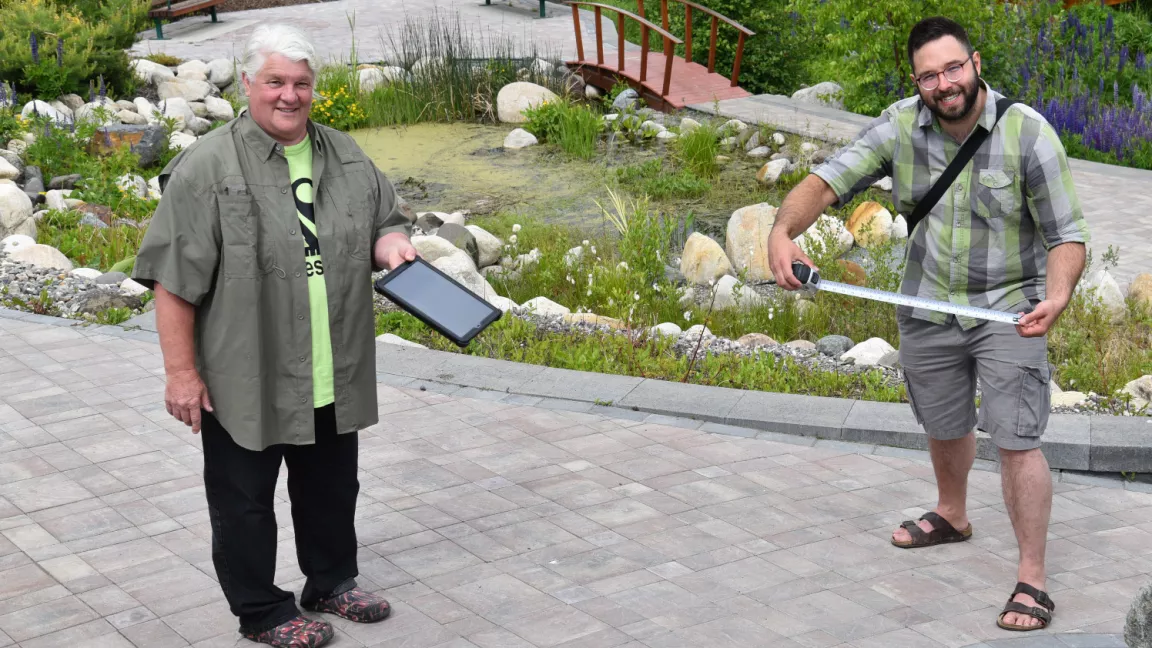Making nature accessible for everyone
British Columbia is home to spectacular outdoor recreational spaces, but not all of them are accessible to everyone. School of Planning and Sustainability Associate Professor Dr. Mark Groulx, Spinal Cord Injury BC, and a team of researchers are exploring ways to change that so everyone can enjoy the benefits of spending time in the natural world.

Across British Columbia, there are extraordinary outdoor recreational spaces where we can explore and interact with the natural world. Spending time outdoors has enormous physical, emotional and spiritual benefits, but many of our outdoor spaces are not accessible to everyone.
Working with Spinal Cord Injury BC and a network of community and academic partners, UNBC School of Planning and Sustainability Associate Professor Dr. Mark Groulx wants to change that.
“One of the lessons we’ve learned during the COVID-19 pandemic is how important it is to have accessible outdoor spaces available to everyone,” Groulx says. “Right now persons with an impairment don’t share equal access to these spaces. Our research will explore ways to address this gap.”
Groulx and the research team received a Social Sciences and Humanities Research Council of Canada Partnership Development Grant worth $177,838 to bring together partners from across the spectrum and develop tools they can use to identify barriers to access and develop plans to remove them. The Nature for all: A barrier free Canada through standards-based practice project includes academic researchers, accessibility advocates, agencies in the tourism and parks sectors and government organizations.
“Barriers can be physical but they can also be attitudes that are framed around ablest understandings of society that assume there is a normal or average individual that we can plan around,” Groulx explains. “What is needed is a shift toward an attitude that recognizes we happen to have a distribution in society of people who engage in all kinds of different mobilities and sensory experiences. We need to plan for that distribution.”
The federal Accessible Canada Act came into force on July 11, 2019. This spring the B.C. provincial government introduced the Accessible British Columbia Act and it received royal assent on June 17. With new laws come new standards. Groulx, Spinal Cord Injury BC, and the research team are looking for ways to make it easier for outdoor tourism and recreation stakeholders to identify the changes they need to make to comply with the regulations and make their sites more accessible for all.
The research will build on work started by Spinal Cord Injury BC. They have already curated more than 200 standards for outdoor tourism and recreation sites ranging from the availability of seating to the slope of trails and have worked with partners in the tourism and recreation sector to apply these standards across all regions of B.C.
“British Columbia is renowned for being ‘super, natural’, but the reality is that far too many of our province’s super, natural experiences are not accessible to people with disabilities. Although the work to make outdoor recreation spaces more accessible to all can seem daunting, there are many inexpensive, easily achieved improvements that can be made now, with larger-scale removal of accessibility barriers made through strategic planning and implementation over time,” says Chris McBride, Executive Director of Spinal Cord Injury BC. “The multi-sectoral partnerships established through this project will be critical for developing the standards, tools, and relationships necessary to support the implementation of accessibility improvements in outdoor recreation spaces in B.C. and across Canada. Together, we can make ‘Super, Natural British Columbia’ super, accessible, too.”
Working with computer scientists Dr. Waqar Haque (UNBC Business Intelligence Research Group) and Dr. Piper Jackson (Thompson Rivers University) and co-founder of the Centre for Technology Adoption for Aging in the North at UNBC Dr. Shannon Freeman, the research will look at ways to synthesize those standards into a standalone smartphone application and database housing accessibility data for outdoor spaces. Operators of outdoor spaces, community groups or volunteers could use the app and database to identify what they need to measure and interpret the results.
“The platform will be used both for reporting of how accessible a site is as well as helping to set priorities for what needs to be changed,” Groulx says. “We won’t know where to invest resources for making upgrades to our outdoor spaces until we have measured to identify the gaps that exist.”
The research will also include joint fieldwork visits to tourism and recreation sites across B.C., so academic researchers, tourism industry associations and accessibility groups can directly provide input on how to design an application and database that meets the needs of community-based organizations.
Working in close collaboration and supporting the leadership that community partners have demonstrated in this space will be key to the project’s success. It’s why the project involves direct partnerships with a range of organizations leading in this space, including the Cariboo Chilcotin Coast Tourism Association, Kootenay Rockies Tourism, the Northern BC Tourism Association, the Thompson Okanagan Tourism Association, Tourism Prince George, Tourism Vancouver Island, and the Travel Penticton Society. The Canada Parks Council, the North Central Local Government Association, and the David Douglas Botanical Garden Society are also partnering in the project.
Groulx is also collaborating with researchers at the University of British Columbia (Dr. Don Carruthers Den Hoed) and Wilfrid Laurier University (Dr. Chris Lemieux), as well as other UNBC researchers including Dr. Theresa Healy (School of Planning and Sustainability), Conservation Science and Practice Professor Dr. Pamela Wright and Conservation Science and Practice Lecturer Jennifer Wigglesworth.
In addition to the collaborations above, the project will support the work of multiple undergraduate and graduate students from a variety of disciplines. Groulx says including such a diverse group of voices will ensure the final technology and research outcomes are more robust.
“UNBC has such a strong culture of community-based collaboration, where community partners are able to lead the project with the support of the academic researchers,” Groulx says. “It’s a model that is ethically informed and includes genuine partnerships.”